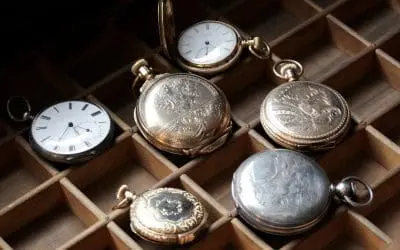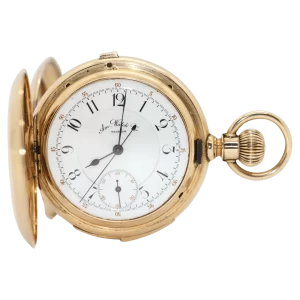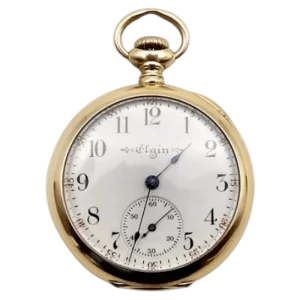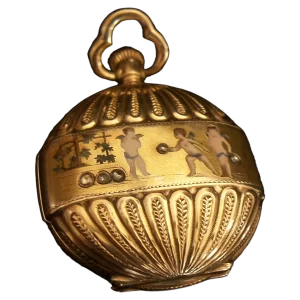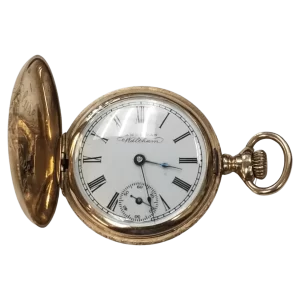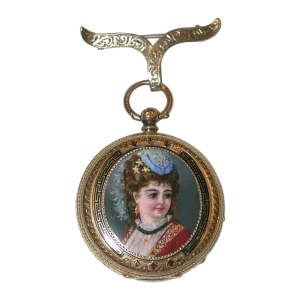Pocket watches have been a staple in timekeeping for centuries, serving as a reliable and convenient accessory for people on the go. However, the way these timepieces are powered and wound has evolved over time, resulting in two popular mechanisms known as key-wind and stem-wind. While both types may seem similar at first glance, their history and functionality set them apart in the world of horology. In this article, we will delve into the fascinating world of pocket watches and explore the key differences between key-wind and stem-wind mechanisms. From their origins and development to their significance in modern times, this historical overview will provide insight into the evolution of pocket watch technology and its impact on our daily lives. So, let’s wind back the clock and discover the unique qualities of these two remarkable timekeeping devices.
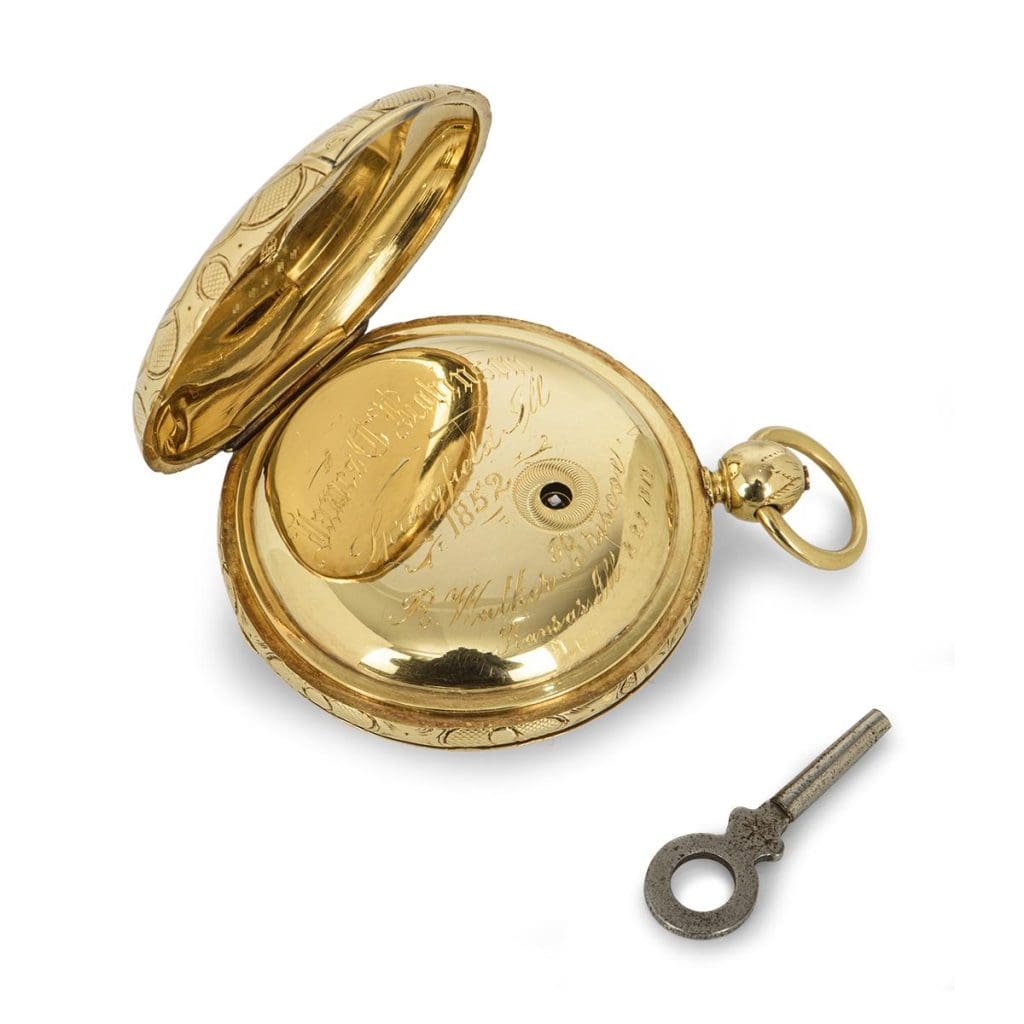
Key-wind: Traditional, classic method
The key-wind mechanism has long been revered as a traditional and classic method for powering pocket watches. This age-old technique involves using a small winding key to manually wind the mainspring inside the watch, providing it with the necessary energy to keep accurate time. The process of winding the watch with a key brings a sense of nostalgia and craftsmanship, as the delicate clicking sound and the tactile feedback of winding the watch by hand create a unique connection between the wearer and the timepiece. Despite the emergence of more modern and convenient winding methods, the key-wind technique continues to captivate watch enthusiasts who appreciate the charm and elegance of this traditional approach.

Stem-wind: Modern, convenient alternative
In contrast to the traditional key-wind mechanism, the stem-wind method has emerged as a modern and convenient alternative for powering pocket watches. With a simple twist of the crown located on the side of the watch, the mainspring is efficiently wound, eliminating the need for a separate winding key. This streamlined process offers a level of convenience and ease, allowing users to quickly and effortlessly wind their watches on the go. The stem-wind mechanism also enables the possibility of additional features, such as date and time adjustments, further enhancing the practicality and functionality of the timepiece. With its modern appeal and user-friendly design, the stem-wind method has become a popular choice among watch enthusiasts seeking a seamless and efficient winding experience.
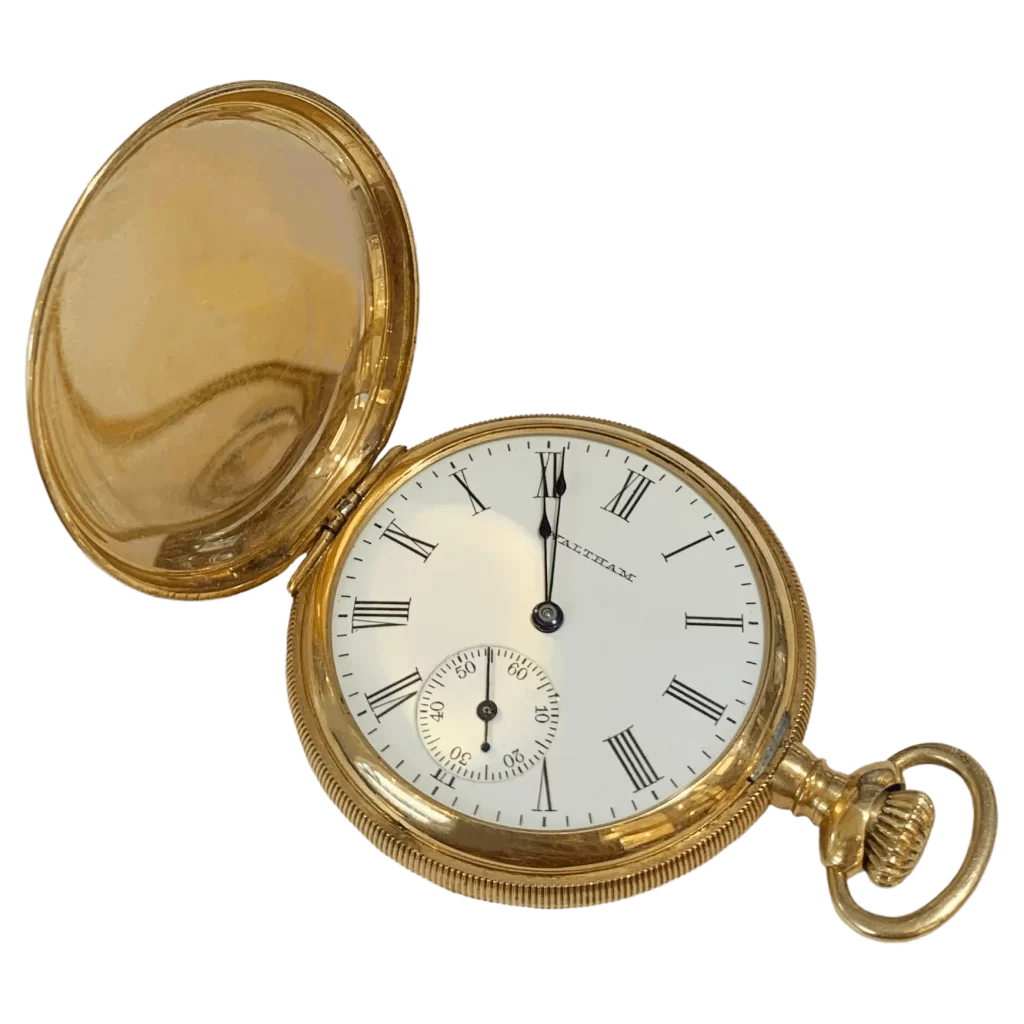
Key-wind pocket watch history
The history of key-wind pocket watches dates back to the 16th century, when the first mechanical timepieces were being developed. These early watches required manual winding through the use of a dedicated key. The process involved inserting the key into a small aperture in the watch case and turning it to wind the mainspring tightly. This key-winding method continued to be the primary means of powering pocket watches for several centuries. It was not until the 19th century that the stem-wind mechanism was introduced, revolutionizing the way watches were wound and offering a more convenient and accessible option for timekeeping. However, the key-wind pocket watches still hold a significant place in horological history, representing an era of craftsmanship and mechanical ingenuity that laid the foundation for the timepieces we enjoy today.
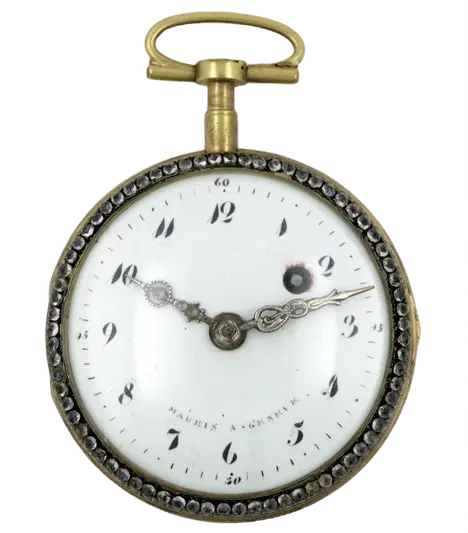
Stem-wind pocket watch evolution
Over time, the stem-wind pocket watch underwent significant evolution, contributing to its widespread popularity and eventual dominance in the watchmaking industry. The introduction of the stem-wind mechanism allowed for a simpler and more efficient method of winding the watch. Instead of relying on a separate key, users could now simply turn the crown, located at the 3 o’clock position on the watch case, to wind the mainspring and power the timepiece. This innovation made it easier for individuals to keep their watches wound and accurate without the need for additional tools. Furthermore, the stem-wind mechanism also enabled watchmakers to incorporate other functions, such as setting the time and date, directly into the crown, further streamlining the overall design and functionality of the pocket watch. With its user-friendly and versatile nature, the stem-wind pocket watch quickly gained popularity among watch enthusiasts and surpassed the key-wind pocket watch as the preferred choice for timekeeping. Its continued development and refinement over the years have contributed to the evolution of the modern wristwatch, solidifying the stem-wind mechanism as a pivotal milestone in horological history.
Key-wind vs. stem-wind design differences
Key-wind and stem-wind pocket watches differ primarily in their winding mechanisms. In a key-wind pocket watch, the process of winding the watch involves inserting a small key into a dedicated keyhole on the watch case and turning it clockwise to wind the mainspring. This design requires the user to have the key on hand and engage in a more involved winding process. On the other hand, in a stem-wind pocket watch, the winding mechanism is integrated into the watch crown. By simply turning the crown in a clockwise direction, the mainspring is wound, eliminating the need for an external key. This design offers a more convenient and efficient winding experience. Additionally, stem-wind pocket watches often allow for additional features, such as time setting and date adjustment, to be integrated into the crown, enhancing their overall usability.
Key-wind: Nostalgic charm and romance
Adding to the rich tapestry of pocket watch history, key-wind timepieces evoke a sense of nostalgic charm and romance. These exquisite watches, with their intricate mechanical movements, embody a bygone era where craftsmanship and attention to detail were paramount. The act of winding a key-wind pocket watch with a delicate key is a tactile experience that connects the wearer to the vintage allure of traditional timekeeping. The gentle turning of the key, the rhythmic ticking of the gears, and the delicate sound of the chimes all contribute to the enchanting ambiance that key-wind pocket watches exude. For those who appreciate the beauty of nostalgia and seek to embrace the romanticism of the past, key-wind pocket watches offer a unique and captivating choice.
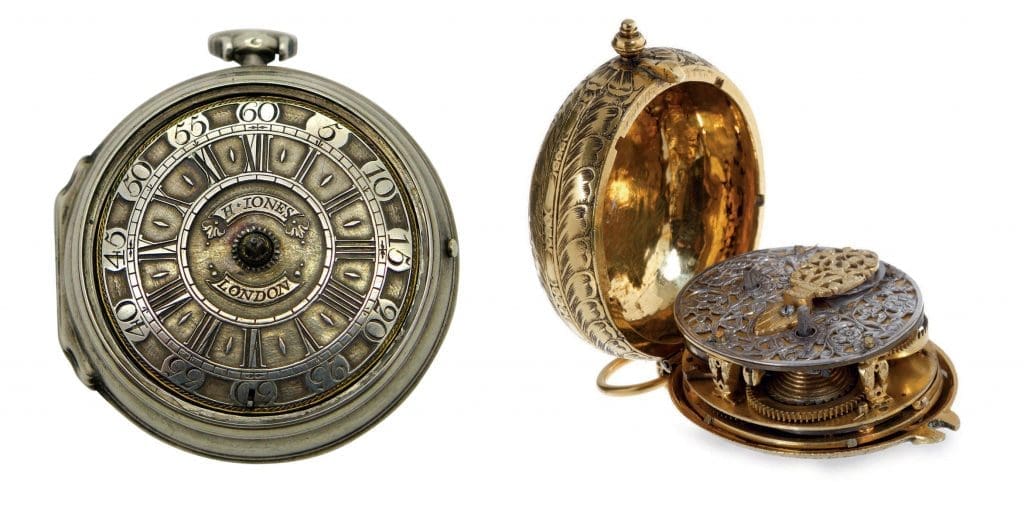
Stem-wind: Reliable and accurate timekeeping
Throughout the evolution of pocket watches, a significant advancement in timekeeping technology emerged: the stem-wind mechanism. Stem-wind pocket watches revolutionized the way time was set and kept, providing a reliable and accurate method for time measurement. Unlike their key-wind counterparts, stem-wind watches feature a built-in crown or knob that can be turned to wind the mainspring and set the time. This convenient innovation eliminated the need for a separate winding key and streamlined the process of adjusting the watch. Additionally, the stem-wind mechanism improved the accuracy of timekeeping by ensuring a consistent and regulated winding tension, resulting in more precise and reliable timekeeping. With its user-friendly design and enhanced timekeeping capabilities, the stem-wind pocket watch became a popular choice for those seeking an efficient and dependable timepiece.

Choosing the right pocket watch.
When it comes to choosing the right pocket watch, there are several factors to consider. Firstly, think about your personal style and preferences. Pocket watches come in a variety of designs, from classic and elegant to more modern and unique. Consider whether you prefer a simple and understated look or a watch with intricate detailing and engravings. Additionally, think about the materials used in the construction of the watch. High-quality pocket watches are often made from durable materials such as stainless steel or precious metals like gold or silver. Another important consideration is the movement of the watch. Mechanical movements, such as those found in key-wind pocket watches, offer a traditional and nostalgic feel, while quartz movements provide accurate and reliable timekeeping. Ultimately, choosing the right pocket watch is a personal decision that should align with your style, preferences, and desired functionality. By considering these aspects, you can select a pocket watch that not only complements your personal taste but also enhances your timekeeping experience.
In conclusion, the evolution of pocket watches from key-wind to stem-wind showcases the advancements in technology and design over time. While both styles have their own unique charm and functionality, it is clear that the stem-wind design eventually became the preferred and more practical choice for everyday use. Regardless of the type, pocket watches remain a testament to the craftsmanship and innovation of early watchmakers, and continue to hold a special place in the hearts of collectors and enthusiasts.
FAQ
What are the main differences between key-wind and stem-wind pocket watches in terms of how they are wound?
Key-wind pocket watches require a separate metal key to wind the mainspring, while stem-wind pocket watches have a built-in stem that is turned to wind the mainspring. The key-wind method involves inserting the key into a hole on the watch to wind it, while stem-wind watches are wound by turning the crown or stem located at the top of the watch. Both methods serve the same purpose of winding the mainspring to power the watch’s movement, but they differ in the mechanism used for winding.
How did the invention of the stem-wind pocket watch impact the popularity and use of key-wind pocket watches?
The invention of the stem-wind pocket watch revolutionized timekeeping by offering a more convenient and user-friendly alternative to key-wind pocket watches. The stem-wind mechanism allowed users to wind the watch easily by turning a small knob, eliminating the need for a separate winding key. This innovation made pocket watches more accessible and appealing to a wider audience, leading to a decline in the popularity and use of key-wind pocket watches over time. Ultimately, the convenience and practicality of stem-wind watches played a significant role in shaping the evolution of timekeeping technology.
What were some of the advantages and disadvantages of key-wind pocket watches compared to stem-wind pocket watches?
Key-wind pocket watches were simpler and easier to maintain compared to stem-wind watches, as they required no key to set the time. However, they were prone to overwinding and had a higher risk of damage if the key was lost. Stem-wind watches, on the other hand, were more convenient to wind and set but were more complex internally, making repairs more difficult and costly. Ultimately, the choice between the two types depended on personal preference for ease of use versus potential maintenance issues.
How did the transition from key-wind to stem-wind pocket watches reflect advancements in watchmaking technology during the 19th and 20th centuries?
The transition from key-wind to stem-wind pocket watches in the 19th and 20th centuries marked a significant advancement in watchmaking technology. Stem-wind watches allowed for easier and more convenient time-setting compared to key-wind watches, which required a separate winding key. This innovation improved the overall user experience and increased the durability and accuracy of timepieces. Additionally, stem-wind watches paved the way for further developments in watchmaking, leading to the creation of more sophisticated and precise timepieces over time.
Are key-wind pocket watches still produced and used today, or have they become obsolete in favor of stem-wind pocket watches?
Key-wind pocket watches are no longer produced and have largely been replaced by stem-wind pocket watches due to their convenience and ease of use. Stem-wind mechanisms are more reliable and practical for everyday use, making key-wind pocket watches less common in modern times. While key-wind pocket watches hold historical significance, they are now generally considered obsolete in comparison to their stem-wind counterparts.



